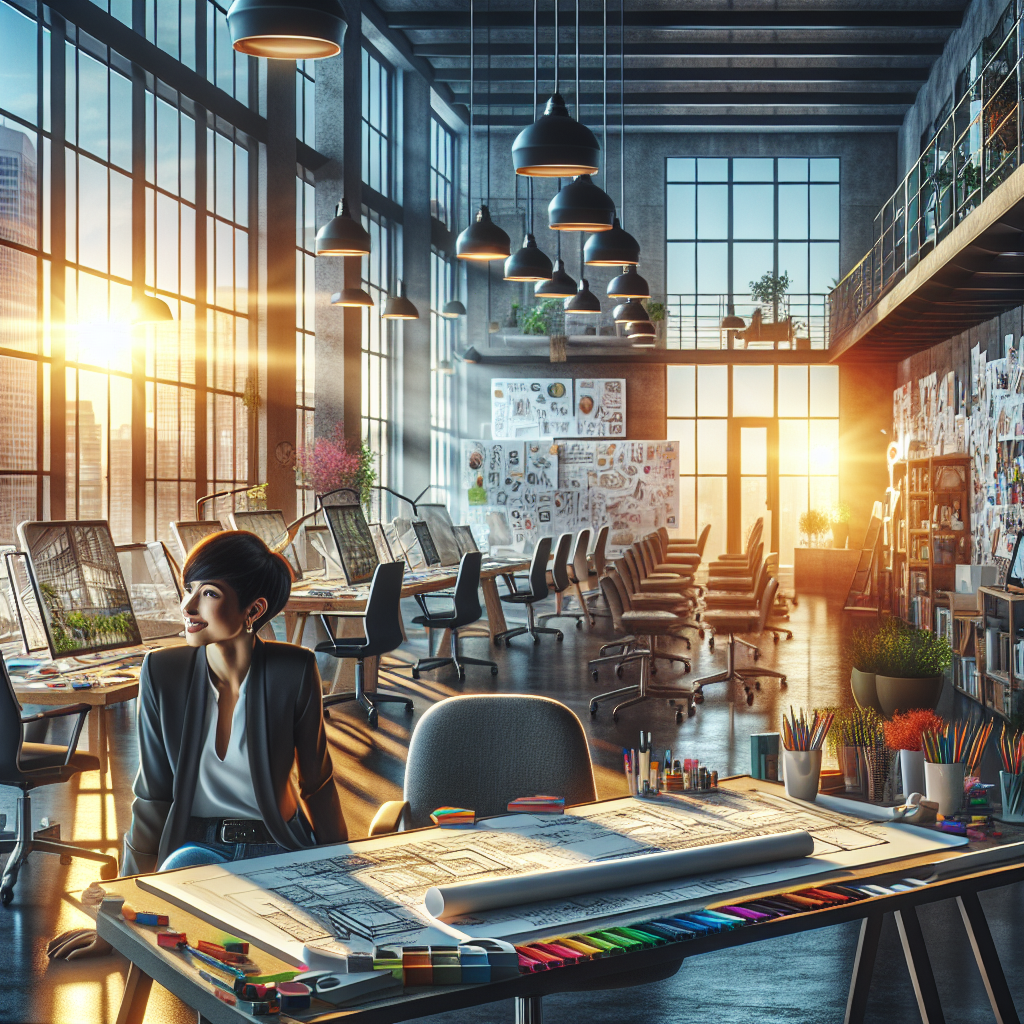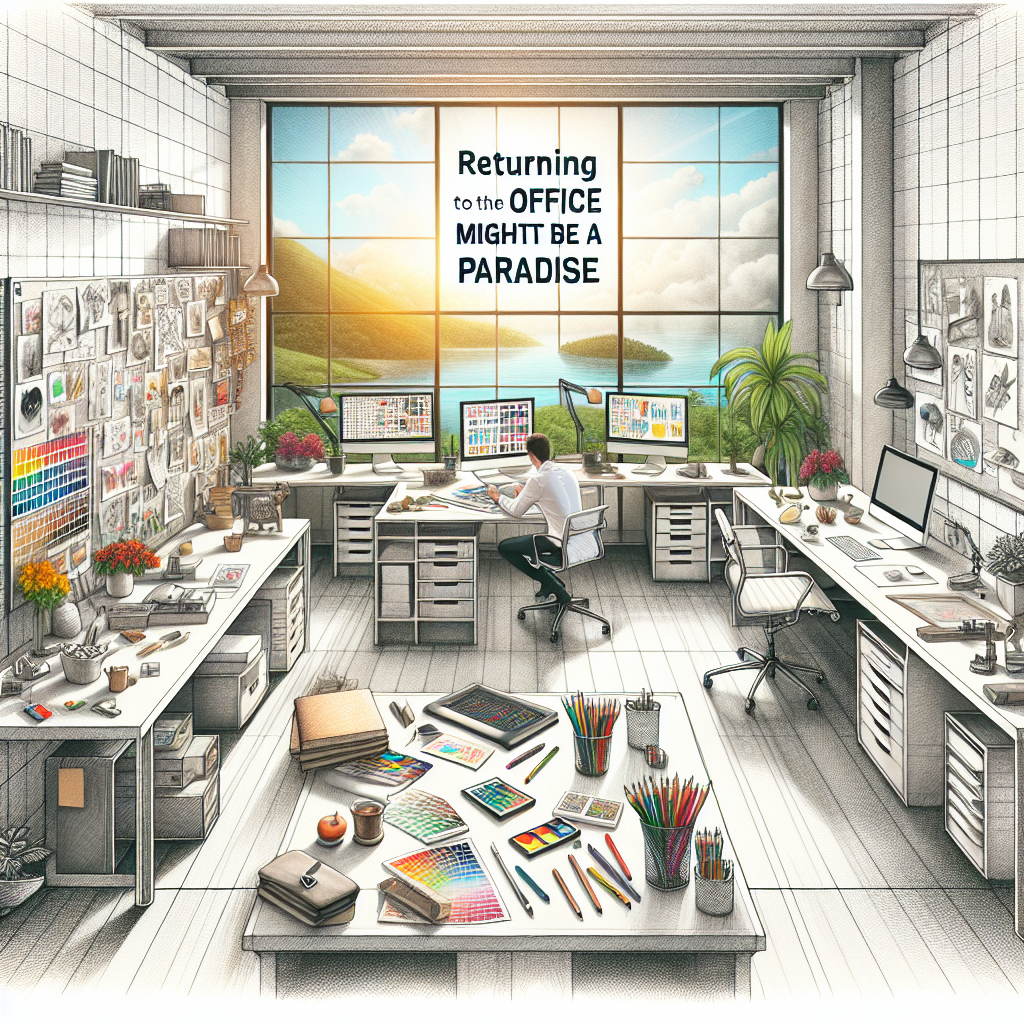-
Table of Contents
- Why Returning to the Office is a Designer’s Paradise
- The Collaborative Environment
- Spontaneous Brainstorming Sessions
- Case Study: IDEO
- Access to Specialized Tools and Resources
- High-Performance Workstations
- Prototyping and Testing Facilities
- Enhanced Communication and Feedback
- Visual Communication
- Example: Pixar Animation Studios
- Building a Stronger Team Culture
- Team-Building Activities
- Example: Google
- Work-Life Balance and Mental Well-being
- Structured Work Environment
- Access to Support Services
- Statistics on Mental Health
- Opportunities for Professional Development
- Mentorship and Guidance
- Training Programs and Workshops
- Networking Opportunities
- Case Study: Adobe
- Conclusion
Why Returning to the Office is a Designer’s Paradise

The COVID-19 pandemic has fundamentally altered the way we work, with remote work becoming the norm for many. However, as the world gradually returns to a semblance of normalcy, the debate over the merits of returning to the office versus continuing remote work has intensified. For designers, in particular, the office environment offers unique advantages that can significantly enhance creativity, collaboration, and productivity. This article delves into why returning to the office is a designer’s paradise, supported by relevant examples, case studies, and statistics.
The Collaborative Environment
One of the most compelling reasons for designers to return to the office is the collaborative environment it fosters. Design is inherently a collaborative process, requiring constant feedback, brainstorming, and iteration. While digital tools like Zoom and Slack have made remote collaboration possible, they cannot fully replicate the spontaneous interactions and serendipitous encounters that occur in a physical office.
Spontaneous Brainstorming Sessions
In an office setting, designers can easily gather for impromptu brainstorming sessions. These spontaneous meetings often lead to innovative ideas that might not emerge in a scheduled virtual meeting. The ability to quickly sketch out ideas on a whiteboard or share physical prototypes can significantly enhance the creative process.
Case Study: IDEO
IDEO, a global design and innovation company, is renowned for its collaborative work culture. According to a study by Harvard Business Review, IDEO’s open office layout and emphasis on face-to-face interactions have been crucial in fostering a culture of innovation. Employees frequently engage in spontaneous brainstorming sessions, leading to groundbreaking design solutions.
Access to Specialized Tools and Resources
Designers often rely on specialized tools and resources that are not easily accessible in a home office. High-end computers, large monitors, 3D printers, and other specialized equipment are typically available in a well-equipped office. Access to these tools can significantly enhance the quality and efficiency of a designer’s work.
High-Performance Workstations
Design software such as Adobe Creative Suite, AutoCAD, and SolidWorks can be resource-intensive, requiring high-performance workstations. Offices are usually equipped with powerful computers that can handle these demanding applications, allowing designers to work more efficiently and effectively.
Prototyping and Testing Facilities
Many design offices have dedicated spaces for prototyping and testing. These facilities allow designers to quickly create and test physical models, which is crucial for product design and development. The ability to iterate rapidly and receive immediate feedback can significantly accelerate the design process.
Enhanced Communication and Feedback
Effective communication and timely feedback are essential for successful design projects. While remote work offers various communication tools, the immediacy and richness of face-to-face interactions are unparalleled. In an office setting, designers can quickly clarify doubts, seek feedback, and make necessary adjustments in real-time.
Visual Communication
Design is a highly visual field, and conveying ideas through sketches, diagrams, and physical models is often more effective than verbal descriptions. In an office, designers can easily share their visual work with colleagues, facilitating better understanding and more constructive feedback.
Example: Pixar Animation Studios
Pixar Animation Studios is known for its collaborative work environment, where artists, animators, and designers work closely together. According to a report by Fast Company, Pixar’s open office layout and frequent face-to-face interactions have been instrumental in producing some of the most successful animated films. The ability to quickly share visual ideas and receive immediate feedback has been a key factor in their creative process.
Building a Stronger Team Culture
A strong team culture is essential for fostering creativity and innovation. The office environment plays a crucial role in building and maintaining this culture. Regular face-to-face interactions help build trust, camaraderie, and a sense of belonging among team members.
Team-Building Activities
Offices often organize team-building activities, such as workshops, social events, and collaborative projects. These activities help strengthen relationships among team members, leading to better collaboration and a more cohesive team culture.
Example: Google
Google is famous for its vibrant office culture, which includes various team-building activities and social events. According to a study by Gallup, Google’s emphasis on team culture has been a significant factor in its success. Employees who feel connected to their team are more likely to be engaged, productive, and innovative.
Work-Life Balance and Mental Well-being
While remote work offers flexibility, it can also blur the boundaries between work and personal life, leading to burnout and decreased productivity. Returning to the office can help restore a healthier work-life balance and improve mental well-being.
Structured Work Environment
An office provides a structured work environment, with clear boundaries between work and personal life. This structure can help designers maintain a healthier work-life balance, reducing the risk of burnout and improving overall well-being.
Access to Support Services
Many offices offer support services, such as counseling, wellness programs, and recreational facilities. These services can help employees manage stress, improve mental health, and enhance overall well-being.
Statistics on Mental Health
According to a survey by the American Psychological Association, 67% of remote workers reported feeling isolated, compared to 29% of office workers. Additionally, 45% of remote workers reported experiencing high levels of stress, compared to 25% of office workers. These statistics highlight the importance of a structured work environment and access to support services in maintaining mental well-being.
Opportunities for Professional Development
The office environment offers numerous opportunities for professional development, which can be particularly beneficial for designers. Access to mentorship, training programs, and networking opportunities can significantly enhance a designer’s skills and career prospects.
Mentorship and Guidance
In an office setting, designers can easily seek mentorship and guidance from experienced colleagues. This mentorship can provide valuable insights, feedback, and support, helping designers grow and develop their skills.
Training Programs and Workshops
Many offices offer training programs and workshops to help employees stay updated with the latest trends and technologies. These programs can provide designers with new skills and knowledge, enhancing their professional development.
Networking Opportunities
The office environment provides numerous networking opportunities, allowing designers to connect with colleagues, industry experts, and potential clients. These connections can open up new opportunities for collaboration, learning, and career advancement.
Case Study: Adobe
Adobe, a leading software company, offers various professional development programs for its employees. According to a report by Forbes, Adobe’s emphasis on professional development has been a key factor in its success. Employees have access to mentorship, training programs, and networking opportunities, helping them stay updated with the latest trends and technologies.
Conclusion
While remote work has its advantages, the office environment offers unique benefits that can significantly enhance a designer’s creativity, collaboration, and productivity. The collaborative environment, access to specialized tools and resources, enhanced communication and feedback, stronger team culture, improved work-life balance, and opportunities for professional development make the office a designer’s paradise. As the world gradually returns to normalcy, designers should consider the numerous advantages of returning to the office and how it can positively impact their work and well-being.
In summary, the office environment provides a fertile ground for creativity and innovation, offering designers the tools, resources, and support they need to excel in their work. By embracing the benefits of the office, designers can unlock their full potential and achieve greater success in their careers.








